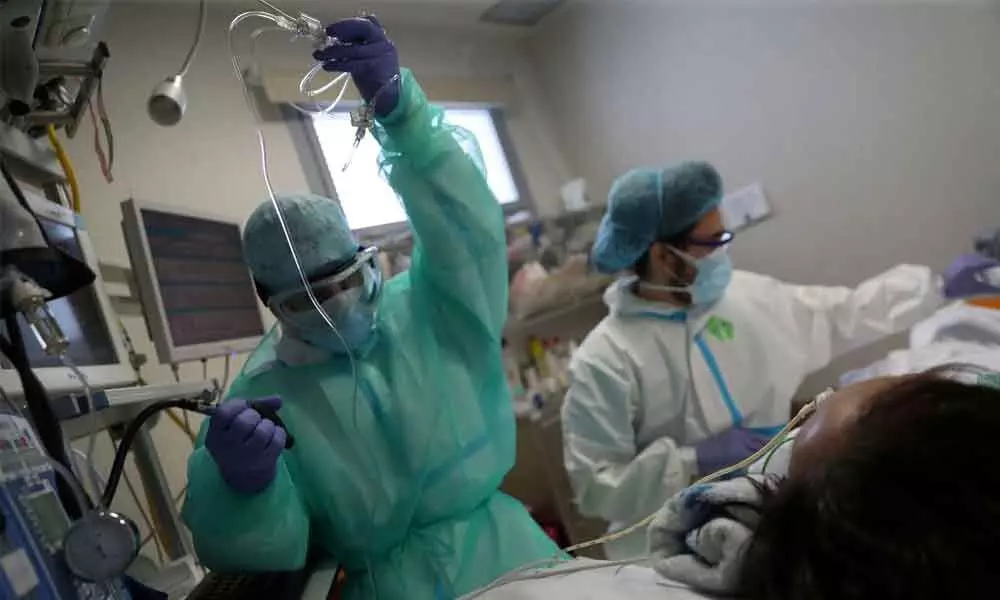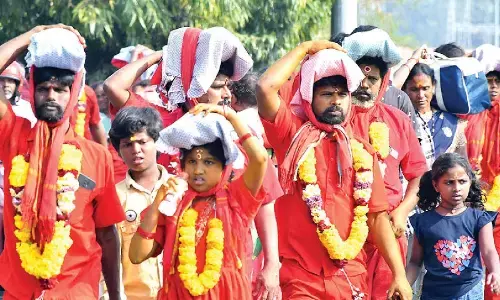Fatality rate of Covid-19: Faulty methods, flaws in calculations

Success in a battle greatly depends upon how well the developments in the battle are monitored. The battle against Covid-19 is no exception
Success in a battle greatly depends upon how well the developments in the battle are monitored. The battle against Covid-19 is no exception.
The important indicators in the battle against Covid-19 are the fatality rate and the recovery rate. A declining trend in the fatality rate and an improvement in the recovery rate indicate a movement on the path of success in the battle against Covid-19.
Hence, it is essential to have the estimates of the fatality rate and the recovery rate at regular time interval to assess the performance in the battle against Covid-19.
It may be noted that only at the end of the war, it is possible to know how many soldiers died in the war. Hence, it is easy to find the mortality rate and the survival rate of the soldiers at the end of the war. For example, in Wuhan City of China, the battle against Covid-19 is almost completed.
Initially, the Chinese authorities announced that 2,570 patients died out of 50,008 Covid-19 affected persons. Thus, the fatality rate turned out be 5.16 percent.
Recently, the figures have been revised. According to the revised figures, 3,869 persons have died out of 50,333 Covid-19 affected persons. Hence, the revised fatality rate has increased to 7.69 percent.
However, when the battle is being still fought, it is not possible to calculate the mortality rate and the survival rate of the soldiers.
No doubt, we may have the data on the number of deaths till the day. But we do not know how many of the remaining soldiers will survive till completion of the war.
In this context, it is worth examining the scientific method to estimate the fatality rate and the recovery rate when Covid-19 pandemic plays havoc with the lives of innocent people.
Scientific method to estimate the fatality rate and the recovery rate requires the data classified on the basis of the date of admission of the patient to the hospital.
Suppose, 100 persons affected by Covid-19 are admitted to a hospital on April 1, 2020. Let us assume that by April 25, 2020, among these 100 persons, unfortunately 15 persons succumbed to the disease and 85 persons, thanks to the efforts of doctors and nurses, completely recovered and were discharged from the hospital.
Now, the fatality rate and the recovery rate would be 15 percent and 85 percent, respectively. Surprisingly, in the present context of Covid-19 pandemic, this procedure seems to be not adopted either due to non-availability of the data in required format or due to the ignorance of the users.
The government has not explicitly spelt out the method adopted by it to estimate the fatality rate and the recovery rate. In this context, it is worth exploring the possible method adopted by the government to arrive at fatality rate and recovery rate based on the data released by it.
According to the government data, out of 33,610 persons affected by Covid-19 till April 30, 1,074 persons died, and 8,373 persons were discharged. So, the number of persons who died and the number of recovered persons is 9,447.
It implies that out of 33,610 affected persons, still 24,136 persons are still in various hospitals undergoing treatment for the disease. We do not know how many of them will survive. It appears that the government has not considered this issue.
More serious defect in this method is the fact that the government is estimating the required rates when the outcome of over 70 percent of patients, who are under treatment, is unknown.
Such estimates fail to reveal the ground reality. For instance, a low fatality rate of 3 % may give some relief to the people, but a recovery rate of 12 % make patients lose their confidence to fight against the disease.
Therefore, the government has to group the available data with it on the basis of date of admission of persons and work out the fatality rate and the recovery rate for each group. Average of estimates so obtained for sufficient number of groups would be more reliable and meaningful for policy formulation.
Many studies make use of the data on the fatality rate in their analysis. However, they do not explicitly mention the method used to estimate the fatality rate. Case Closed Method is one of the methods which deserves some attention.
This method makes use of the data on the number of deaths and the number of patients discharged from the hospitals. In this method, the fatality rate during a period is taken as percent of number of deaths to the number of deaths and the number of patients discharged from hospitals during that period.
The implicit assumption in this method is that all the people are admitted at the beginning of the period which is generally not true.
However, if the rates are estimated for different time periods then it may, hopefully, provide a broad trend.
In the absence of the data in the required format, a pragmatic method using the available data to estimate the fatality rate has been developed.
It is assumed that the number of patients undergoing treatment in hospitals on any day will either recover or succumb to the disease in a period of 15 days. Therefore, the fatality rate is taken as percentage of deaths during a period of 15 days to the number of patients at the beginning of the period.
The robustness of the method is verified by using moving average of five days instead of single day figure. For instance, the number of patients in the hospitals on March 15 was 92.
The number of deaths during the period of March 15 to March 30 was 27. Therefore, the fatality rate for the period is taken as 29 percent.
The fatality rate for the next fifteen days i.e., March 30 to April 14 has recorded more or less same rate (310/940 i.e., 33 %). During the second half of April there was a drastic decline in the fatality rate to 8 %. The fatality rate further declined to 5 % during the month of May.
It is observed that with passage of time, the number of Covid-19 patients, in absolute number, has increased rapidly but it is a relief to note that the number of deaths is increasing at a lower rate.
This trend may be due to the increase in the number of hospitals over time. It is also possible that the people who have lower immunity power are affected first and are likely to have relatively high fatality rate while people with higher immunity are likely to be affected at a later stage and are likely to have higher recovery rate.
(S Indrakant is visiting professor, CESS, Hyderabad and N Linga Murthy is former Vice- Chancellor, Kakatiya University, Warangal)




















